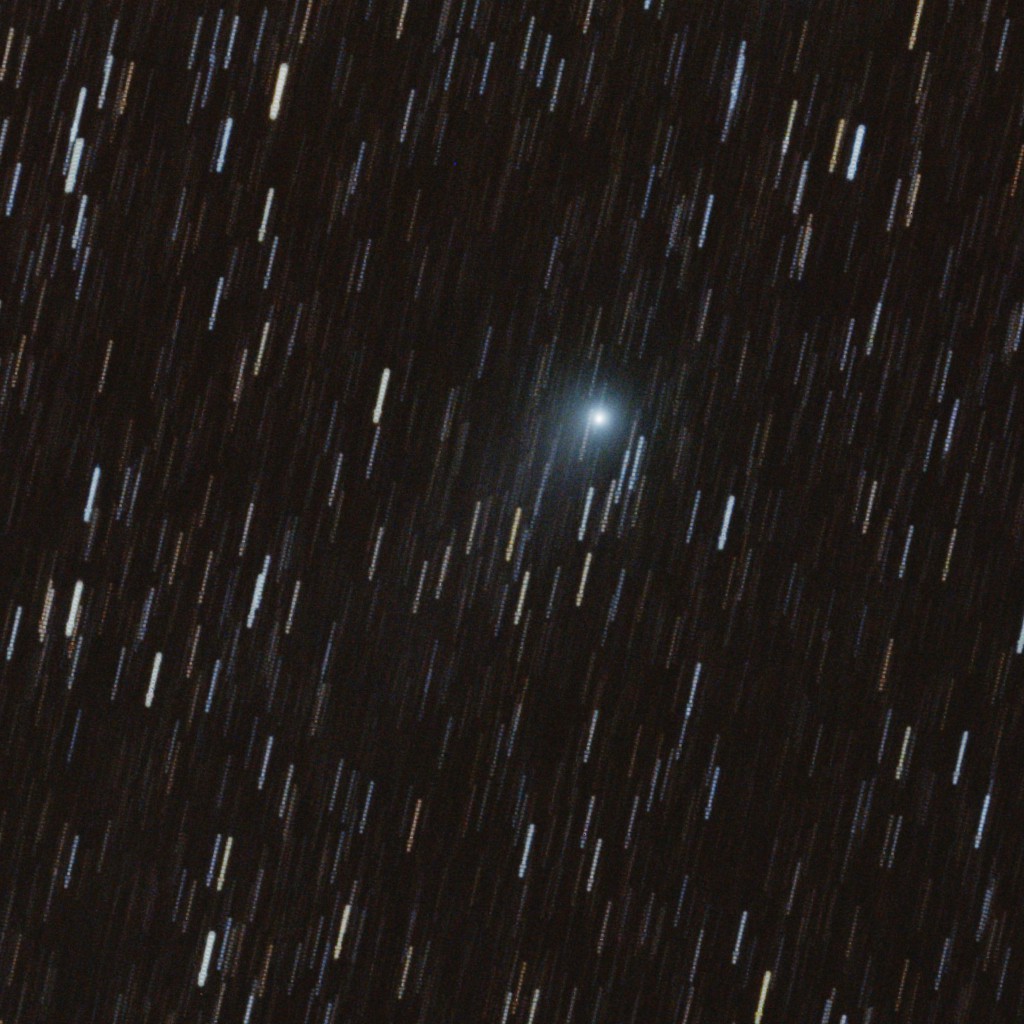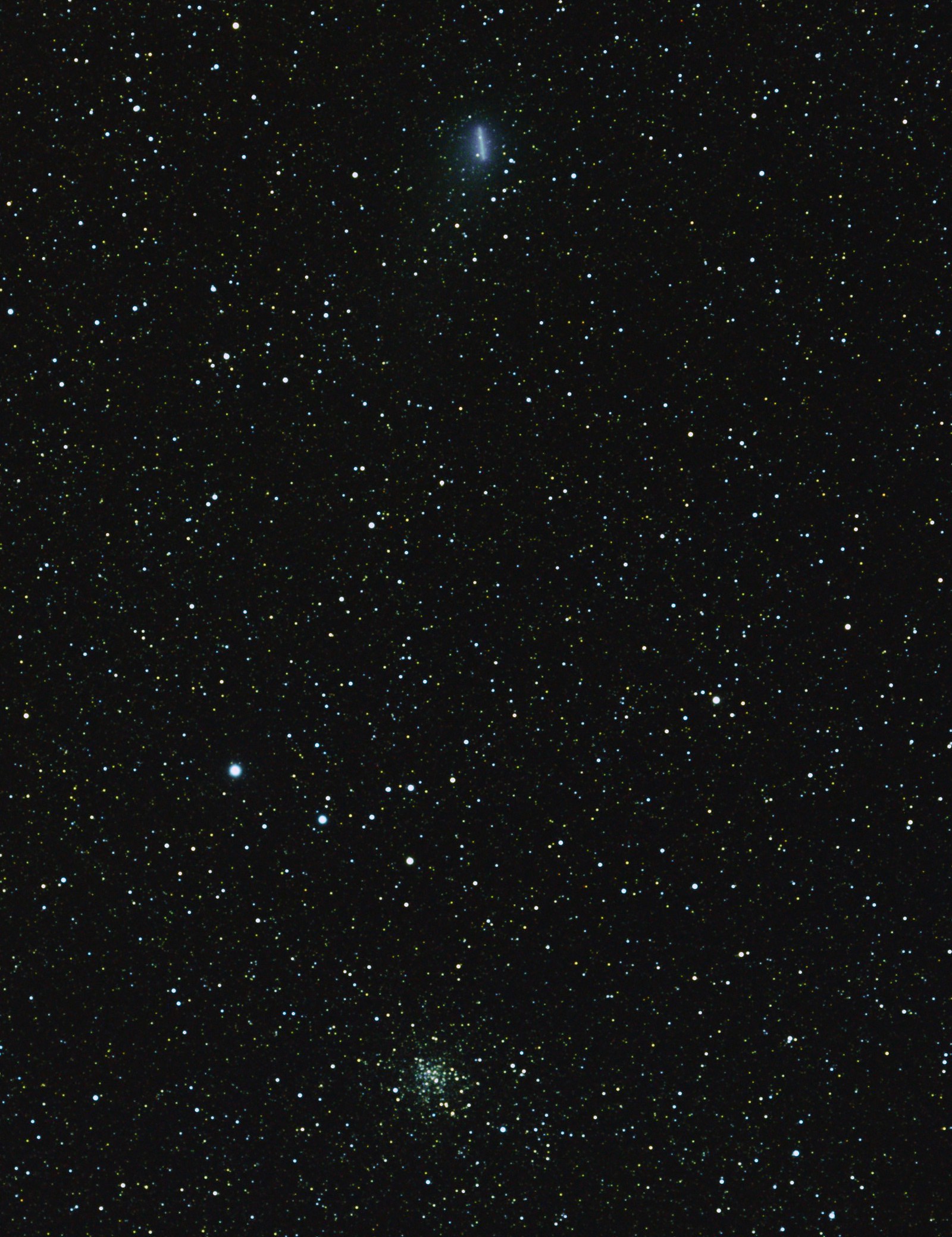There it is. I have wanted to immortalize this comet since July, but it was too low for me. It finally arrived in Sagitta, but I missed the conjunction with M71 because it was overcast (no wonder), but luckily the two objects were still close enough the next day when it cleared up.
What you see above is the stack of fourteen frames, three minutes each. Of course the comet is moving and not the star, but I have aligned these images keeping the comet stationary.
In the next picture you can see the comet leaving a trail. It’s a larger field including the open cluster M71:
The Garradd C/2009 P1 comet was discovered, as the name implies, by Garradd in 2009 when its magnitude was 17.5.
This page contains a lot of information about the comet.
Messier 71, at the bottom of the picture, is a globular cluster in Sagitta. I’d like to quote an interesting parte from Wikipedia:
M71 was long thought (until the 1970s) to be a densely packed open cluster and was classified as such by leading astronomers in the field of star cluster research due to its lacking a dense central compression, and its stars having more “metals” than is usual for an ancient globular cluster; furthermore, it’s lacking the RR Lyrae “cluster” variable stars that are common in most globulars. However, modern photometric photometry has detected a short “horizontal branch” in the H-R diagram of M71, which is characteristic of a globular cluster. The shortness of the branch explains the lacking of the RR Lyrae variables and is due to the globular’s relatively young age of 9-10 billion years. The relative youth of this globular also explains the abundance of “metals” in its stars. Hence today, M71 is designated as a very loosely concentrated globular cluster, much like M68 in Hydra.


